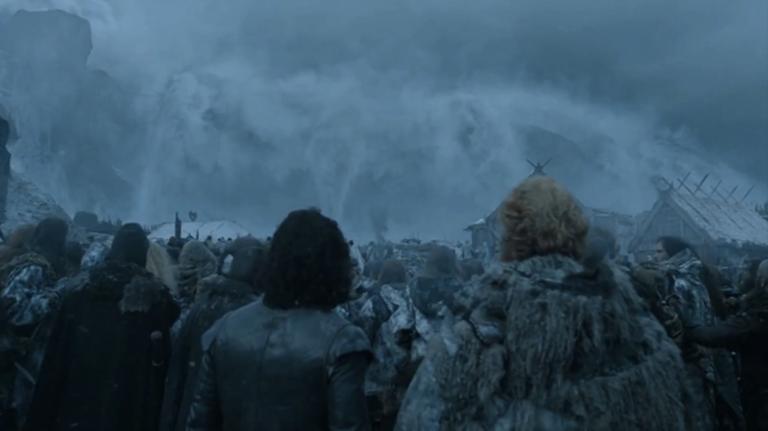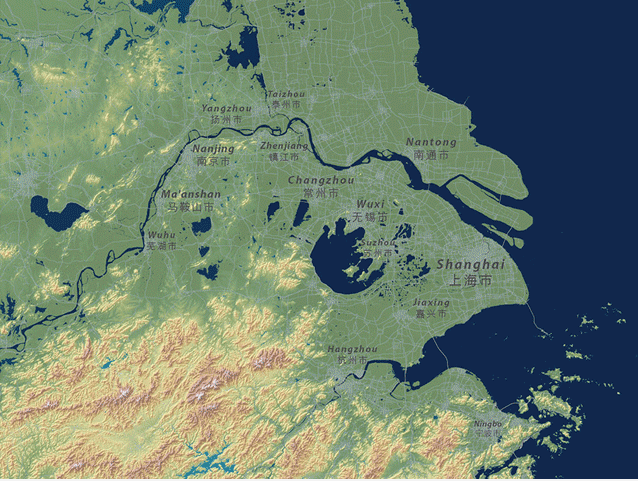Want to know what cities across the globe would look like if all the world’s ice sheet melted? Cartographer Jeffrey Linn has you covered. He’s already drowned a few metropolises, including Los Angeles, New York, and even Grist’s hometown of Seattle. But he recently tackled a bigger – and arguably more frightening – project: mapping the effects of future sea-level rise on the Chinese coast, specifically in the population megacenters surrounding Shanghai, Qingdong, and Haikou.
According to Fast Company, those population-dense regions are home to about 40 percent of the country’s population (around 542.8 million, give or take). One such region, the Pearl River Delta, home of Hong Kong, recently earned the title of East Asia’s largest megacity by topping 65 million people. Linn’s maps predict a future where the nation’s coastline is going to look more like one massive archipelago like the Yangtze River Delta below.*
“Greater Shanghai alone has over 24 million people, and will ultimately be devastated by rising seas … U.S. cities aren’t that large and we don’t have anywhere near the populations in low-lying estuary areas that will be at risk,” Linn told Fast Company.
And other regions are going under, too. Fast Company has the deets:
Up the eastern coast of China, the city of Qingdao is also at risk. In Linn’s maps, most of the region around Qingdao disappears, turning the peninsula into a series of small islands. By 2070, the city could have more than $600 billion in assets at risk from flooding.
While things certainly do not look good or y’ know, dry, for the Chinese coast, Linn’s maps are depicting sea-level rise in the millennium ahead. But don’t let that thousand-year projection fool you: China needs to make good on its commitment to fight climate change right now – or subsidize snorkels for 40 percent of its people. That’s a lot of snorkels, China.
*We originally identified the Yangtze River Delta as the Pearl River Delta. Grist regrets the error and has sentenced the author to two weeks of intensive geography studies.





